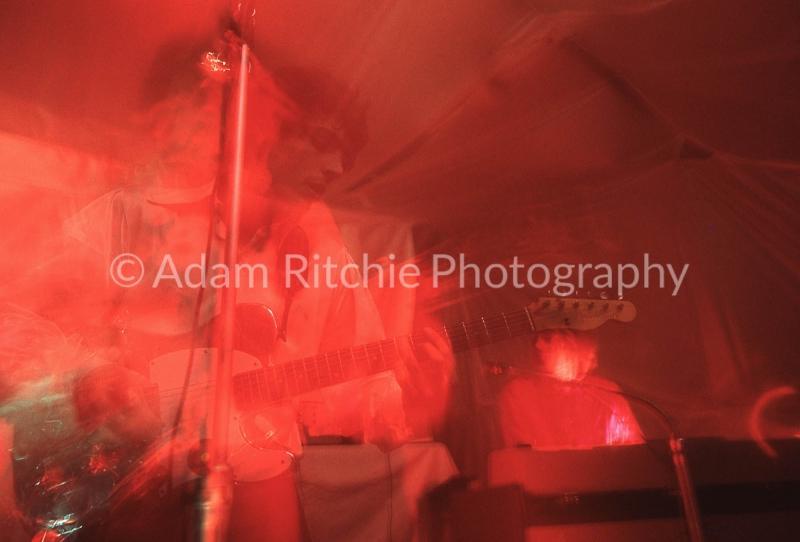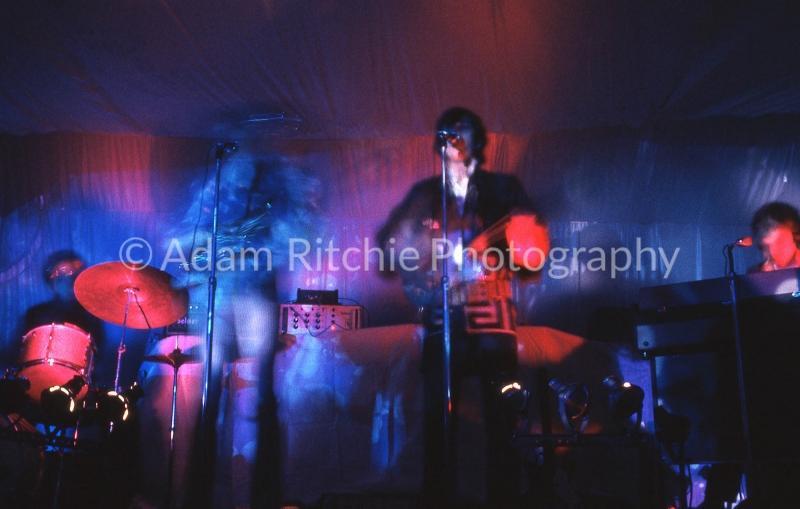In 1966 There Was Pink Floyd And The Velvet Underground:
An Interview With Photographer Adam Ritchie
Interview By: Yusuf Eckholm
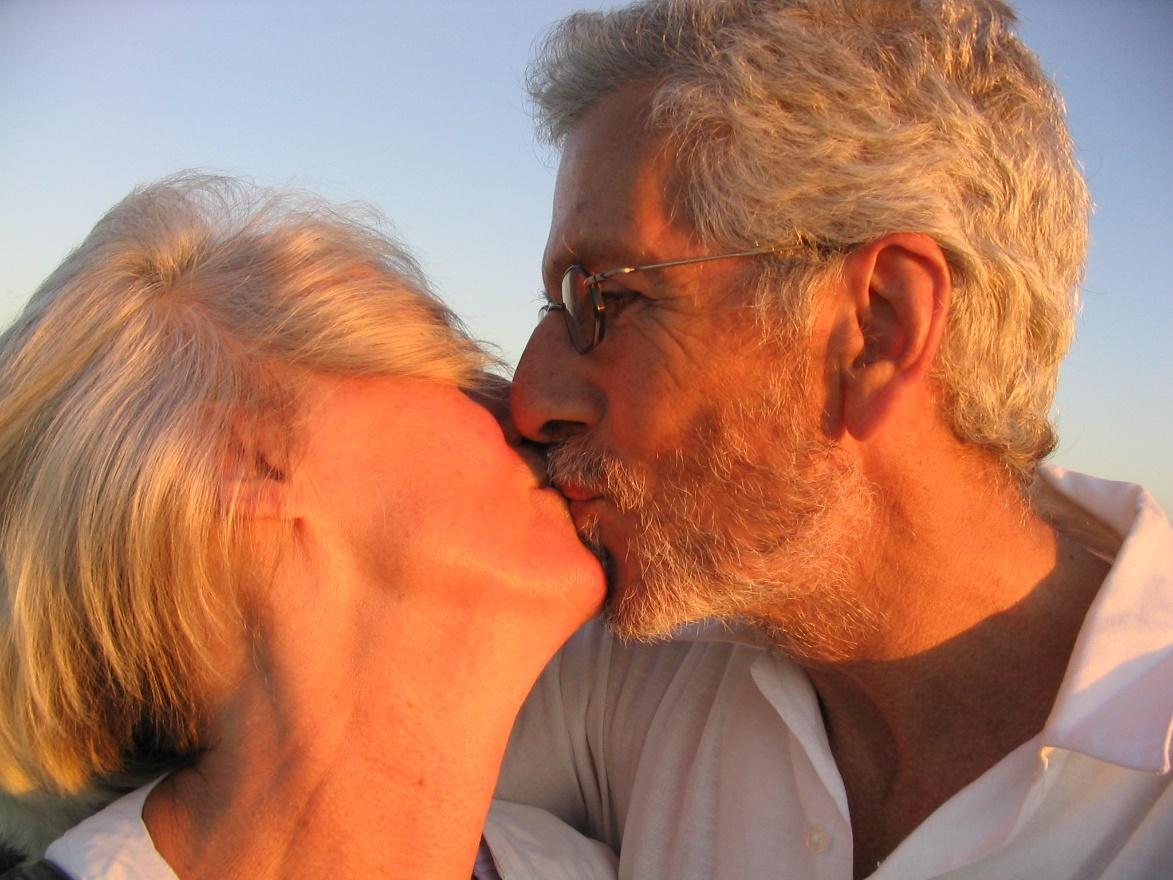
Adam Ritchie was one of the select few to not only witness but also document both early performances of the Velvet Underground and Pink Floyd with original front man and song-writer Syd Barret between 1965-1966.
Ritchie photographed the Velvets at the Café Bizarre (where drummer Maureen “Moe” Tucker was reduced to tapping a tambourine instead of her signature African tribal/Bo Diddley manic style of ferocious drumming) and during the filming of Piero Heliczer Venus in Furs. He also shot Pink Floyd at the infamous UFO where Syd Barret is depicted in chaotic strikes of psychedelic colors. The photographs have appeared in various magazines and exhibitions.
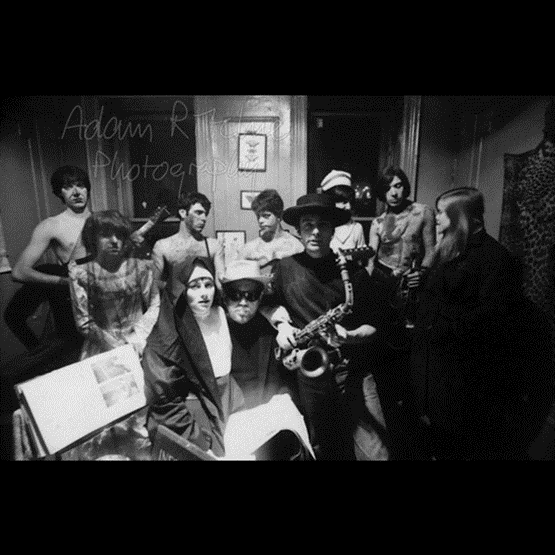
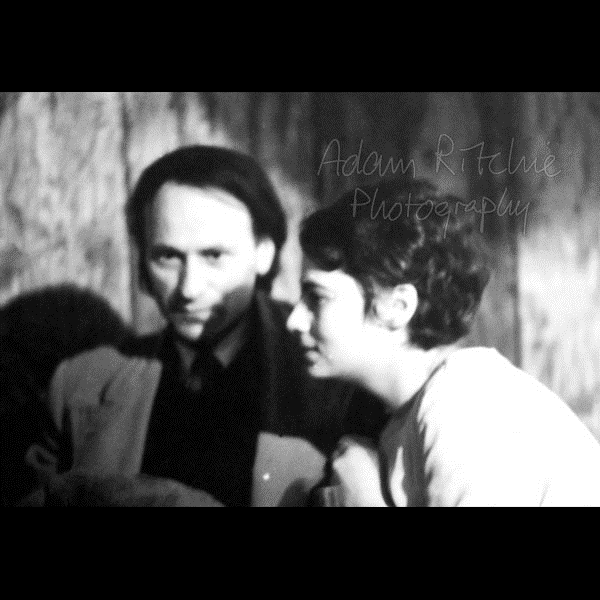
Punk Globe: You get involved with photographing the Velvet Underground at their least known documented performances like the Cafe Bizarre. Did the filmmaker Barbara Rubin bring you along to document the band?
Adam Ritchie: I was working as an English freelance photographer in New York in 1965. I lived on the Lower East Side. A friend, Barbara Rubin, phoned one day and said “Come along and photograph this movie I’m in, there is great music.” I went the same day because the film was being made very close to where I lived and I was interested in underground culture, (though not exclusively). As I went up the stairs of a decrepit house, I heard the music and it really was exciting. I went into the shabby room filled with bright film lights, three musicians in body paint and a woman drummer in a veil. Barbara Rubin was dressed as a nun. Piero Heliczer, who was making the film, “Venus in Furs” and blowing a saxophone from time to time. Margaret, a girl I’d met somewhere else a week before, dressed as a nurse and a man in a hat who had Barbara (dressed as a nun) sitting on his lap. There was a news cameraman from CBS filming the making of the film. Barbara told me the musicians were an unknown group called The Velvet Underground. They were playing “Heroin”. I thought they were amazing. I took the pictures for myself to record life in New York on the Lower East Side and to show how people dealt with it. I found out Velvet Underground were playing at the Cafe Bizarre and photographed and listened to them there and at the NY Film-makers Cinematheque. They told me about playing at Delmonico’s Hotel for the NY Society of Clinical Psychiatrists’ annual dinner so I went to that and photographed as well.
Punk Globe: Was the attraction of their music, image, or the mere fact that you were part of a cluster of the New York Avant Guard during the 1960’s that enabled you to continue photographing the Velvets since they were virtually unknown?
AR: I took photos of Velvet because I was interested in new culture. If someone would publish them great, if not, no worry. I came back to London in June 1966 where my son was born. In London, my friend Hoppy (John Hopkins), who, with Joe Boyd, hired Pink Floyd in 1966 to raise money for the London Free School. They hired them also at UFO, a club they started. I photographed them because I was interested but also sold the pictures for a cover story in Town Magazine.

Punk Globe: Did you interact with members of the Velvets or did you remain the silent photographer?
AR: I talked with John Cale of the Velvet because he was Welsh and I was English. They felt like an intelligent band, even if they were singing about heroin and “Waiting for the Man”. They weren’t famous. It felt more like we were all people trying out new things and making our own culture.
Punk Globe: What are your recollections of the Velvet Underground performing both during and making of Piero Heliczer’s Venus in Furs and for the American Society of Clinical Psychiatry at the Delmonicos Hotel? There’s onc photo of Gerald Malanga, Edie Sedgwick, and Nico looking very reserved and respectable around the older adults around the dinner table.
AR: Andy Warhol was invited by the Psychiatrists to bring his entourage and to show the Psychiatrists a bit of the underground culture. Andy managed the Velvet and paired them with Nico, a German blond singer.actress and model. I thought she was awful. Andy’s group was given a big table. They were sitting there for a while, but some of them got up and started filming the psychiatrists and interviewing them pretty aggressively. It got uncomfortable later on. I got into photography in late 1964. I was in New York working as European Research Editor for a company called Business International (Barack Obama worked there a lot later) The company was eventually bought by the Economist Intelligence Unit. One day I saw a rat walking calmly down East 10th Street where I lived. I wanted to capture the weird things I saw every day. A friend who was a freelance photographer with a small darkroom on 11th St said he would help me choose a camera (I knew nothing about photography or cameras) On a Friday after work we went to a big discount store and I bought a Minolta single lens reflex. I took a load of photos on Saturday morning, developed them in his darkroom Saturday afternoon, printed the pictures quite large on Sunday. I went to work on Monday and covered the wall of my office with my prints. Everyone came and looked at them because they were pretty good. A month later I photographed a conference organized in Washington DC by the company and they got a lot of orders for the pictures, many more than when they had hired a professional to take pictures. After three months, the boss of the company called me in and said how important it was to do the thing your heart meant you to do. He gave me three months’ salary to take my own photographs and start earning a living as a photographer. I could come to the office to show my photographs. He was right and I was earning a living as a photographer after about three months and enjoying it more than being an economist. They were very generous.
Punk Globe: Why did you pursue photography as a career? What were you hoping to do with the photographs once they were developed?
AR: I took photos of the Velvets because I was interested in new culture. If someone would publish them great, if not, no worry. I came back to London in June 1966 where my son was born. In London, my friend Hoppy (John Hopkins), who, with Joe Boyd, hired Pink Floyd in 1966 to raise money for the London Free School. They hired them also at UFO, a club they started. I photographed them because I was interested but also sold the pictures for a cover story in Town Magazine.
Punk Globe: You managed to isolate the height of ’60’s London by showcasing the people, dress, light shows, and of course Pink Floyd. But, Syd is either missing or blurred in the photos. Do you think that younger fans would get the wrong impression since Roger is more present in the photographs which doesn’t allow them to acknowledge early Pink Floyd since it was Syd who wrote the songs and was the lead singer? It’s the same with Brian Jones of the Rolling Stones. People forget that it was he that started the band and was the most popular member without ever being the singer.
AR: Syd was very difficult to photograph. I’ve found some more pictures of him and just put them on my website, but usually he was obscured by the microphone or lights or just turned away. Roger was mostly full out front and striking a pose. My pictures of Floyd are often blurred because the light levels were very low and you can’t photograph a lightshow using flash. Most of the exposures were between 1/2 sec and 2 second hand held. Sometimes someone else would take a flash picture while my camera was open so there is both the saturated color of the lightshow and a sharp image at the same time.
Punk Globe: Rock Photography were mostly used for articles, LP covers, singles, and posters. Why do you think Rock Photography is now considered limited edition, signed, and numbered Fine Art which is shown in galleries and museums?
AR: All my other pictures (12 years work) no longer exist. I stopped being a photographer and built houses in Wales instead. When I came back to London the photo lab where I kept all my negatives had gone out of business and my pictures disappeared except for my Velvet and Pink which by chance I still had. A few years ago, Stephanie Roberts, Nick Mason’s archivist and picture researcher, heard I had some Floyd pictures and came to see them. They were jumbled in an old bag. She numbered all the color slides and filed them in plastic sleeves and later he used some in his book “Inside Out”. I began to see that there might be commercial interest in them and took them to Redferns (later bought by Getty Images) They copied some of them and have been selling them to magazines, newspapers, and books ever since.
Punk Globe: Not only were the Velvets photographed in their prime but you also captured the original Pink Floyd with Syd Barret. Can the two bands ever be compared or do they stand alone with their musical styles, clothing, culture, and lyrics despite existing and playing around the same time?
AR: Syd was very difficult to photograph. I’ve found some more pictures of him and just put them on my website, but usually he was obscured by the microphone or lights or just turned away. Roger was mostly full out front and striking a pose. My pictures of Floyd are often blurred because the light levels were very low and you can’t photograph a lightshow using flash. Most of the exposures were between 1/2 sec and 2 second hand held. Sometimes someone else would take a flash picture while my camera was open so there is both the saturated color of the lightshow and a sharp image at the same time (later bought by Getty Images. They copied some of them and have been selling them to magazines, newspapers and books ever since).
Punk Globe: These bands don’t exist and some of the members have moved on to solo careers or passed away. What is it about their music and influence that fans and collectors want to keep the past alive whereas someone like John Cale of the Velvets is more interested in his new EP, tours, and photography for example?
AR: John Cale is living now and interested in the present, not sentimentally dwelling on the past. Good on him. I’ve got a new website and just had an exhibition so that’s what I’m doing. Now I’m thinking about taking the exhibition to Japan, if anyone is interested. Any offers? I’ve never been to Japan.
